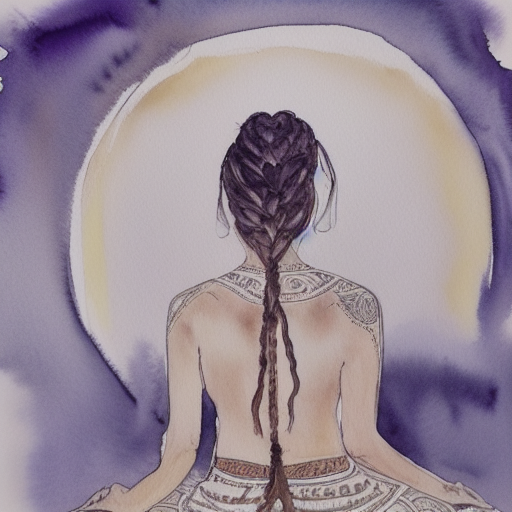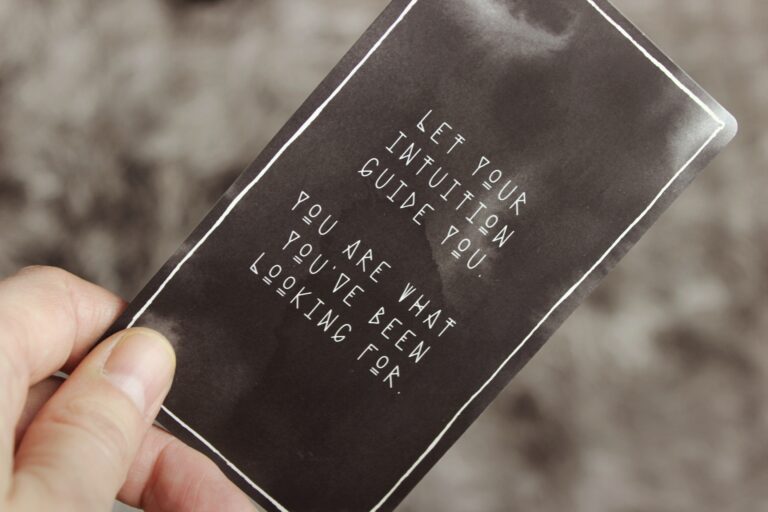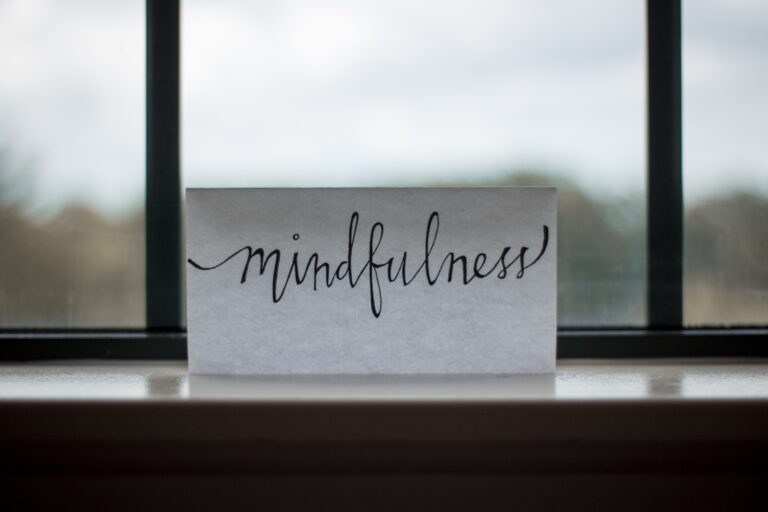How to Meditate for Beginners
Meditation is an incredibly powerful tool that can help you manage stress, improve your focus, and boost your overall well-being. If you’re new to meditation, it can seem a bit overwhelming at first. There are so many different ways to meditate, and it’s hard to know where to start.
In this post, we’ll give you a crash course in meditation for beginners. We’ll cover what meditation is, the benefits of meditation, different types of meditation, and how to get started with meditation. By the end of this post, you’ll have everything you need to start your own meditation practice.
What is Meditation?
Meditation is an ancient practice that has been used for centuries to promote relaxation and mindfulness. Meditation involves focusing your attention on a single object or activity and letting thoughts come and go without judgment. When you meditate, you can focus on your breath, a mantra or affirmation, or a specific question or problem that you’re trying to solve. The goal of meditation is not to clear your mind of all thoughts, but simply to observe your thoughts without getting caught up in them.
Benefits of Meditation
There are countless benefits of meditation. A regular meditation practice can help reduce stress and anxiety, improve sleep quality, increase focus and concentration, boost self-awareness, and promote overall well-being. If you’re new to meditation, it’s important to start slow and be patient. It takes time and practice to see the full benefits of meditation.

Types of Meditation
There are many different types of meditation practices, but here are some of the most popular:
• Mindfulness Meditation: Mindfulness meditation involves focusing on your breath and being present in the moment without judgment. This type of meditation can be helpful for managing stress and anxiety.
• Guided Meditation: Guided meditations involve following along with a pre-recorded audio track that includes instructions and often soothing music or nature sounds. Guided meditations are great for beginners who want some structure to their practice.
• Visualization Meditation: Visualization meditations involve creating mental images of things you want to manifest in your life. This could be anything from success in your career to better health or relationships.
• Transcendental Meditation: Transcendental meditation involves repeating a mantra or affirmation while seated with your eyes closed. This type of meditation can be helpful for promoting relaxation and reducing stress.
Easy Meditation Techniques for Beginners
1) Commit to 1 Minute: One of the biggest barriers to starting a meditation practice is thinking that you don’t have enough time. The good news is that you don’t need hours out of your day to meditate! A good place to start is by committing to 1 minute per day. Once you’ve built up a regular practice, you can gradually increase the amount of time you meditate each day as it feels comfortable for you.
2) Find a Quiet, Comfortable Place: It’s important to find a quiet place where you won’t be interrupted when you meditate. If possible, find a place where you can sit comfortably with your back straight and your feet flat on the ground. You might want to sit in a chair with good posture or cross-legged on a cushion on the floor.
3) Try a Guided Meditation: If thoughts constantly racing through your mind make it difficult for you concentrate on meditating, try listening to a guided meditation instead! Guided meditations provide instructions and often include soothing music or nature sounds in the background which can help relax your mind and body so that you can more easily focus on the present moment.
4) Focus on Your Breath: One simple way to meditate is to focus on your breath as it moves in and out of your body. As thoughts arise during your mediation (and they will!), simply observe them without judgment and return your focus back onto your breath.

Creating a Meditation Space
If you want to create a dedicated space for your meditation practice, there are a few things you’ll need:
• A comfortable place to sit or recline: This could be a cushioned chair with good posture, a yoga mat or blanket on the floor, or a pillow. Just make sure that whatever you’re sitting on is comfortable enough that you won’t be distracted by discomfort during your meditation.
• A place to keep your meditation props: This could be a small table or shelf near your seating area. Some things you might want to keep nearby include a timer, some soothing music or nature sounds, and a pillow or cushion. You could also keep some incense handy if that appeals to you. It’s also nice to have a journal nearby so that you can jot down any thoughts or insights that arise during your practice.
• A place to hang a special piece of artwork or keep a plant: This is completely optional, but some people like to create a space that feels calm and sacred. Hang up a special piece of artwork or keep a plant in your meditation area to help create a sense of peace.
Tips for Sticking With It
1) Set a regular time: One of the best ways to make sure you stick with your meditation practice is to set a regular time for it each day. If you can, meditate at the same time each day so that it becomes part of your daily routine.
2) Keep it short: As a beginner, it’s best to keep your meditation sessions short so that you don’t get discouraged. If you only have 5 or 10 minutes to spare, that’s fine! You can always increase the length of your sessions as you get more comfortable with the practice.
3) Don’t worry about doing it perfectly: Meditation is not about clearing your mind of all thoughts or sitting perfectly still. It’s perfectly normal for your mind to wander during meditation, and that’s okay! Just gently bring your focus back to your breath whenever you notice that your thoughts have drifted.
4) Find a comfortable position: You don’t have to sit in lotus position or any other particular way to meditate. Just find a position that you can maintain for the duration of your session without getting too uncomfortable.
5) Be patient: Like with anything else, it takes time and practice to get good at meditation. Don’t expect to be a master meditator overnight! Just keep with it and be patient with yourself.
Facing Difficulties While Meditating
Remember, the goal of mediation is not perfection but simply showing up each day with an open mind and heart. If you find it difficult to quiet your mind during meditation, don’t worry!
It’s normal for your thoughts to wander, and it takes time and practice to be able to focus on the present moment. Be patient with yourself and know that every little bit counts. Over time, you’ll likely find it easier and more enjoyable to meditate.
We wish you well on your journey inward! Please feel free inform us about any experiences – positive OR negative – about starting (or continuing) a mediation practice.
Meditation FAQ
Q: What if I can’t sit still for long periods of time?
A: If you can’t sit still or find it uncomfortable to do so, try lying down on your back with your feet about hip-width apart and your arms resting by your sides. Once you’re settled, close your eyes and focus on your breath. If your mind starts to wander, simply observe the thoughts without judgment and return your focus back to your breath.
Q: What if I don’t have time to meditate?
A: It’s important to make time for meditation, but life can be busy! If you find it difficult to set aside time for a longer meditation, start by committing to 1 minute per day. Once you’ve built up a regular practice, you can gradually increase the amount of time you meditate each day as it feels comfortable for you.
Q: I find it hard to focus on my breath. What should I do?
A: If you find it difficult to focus on your breath, try focusing on a mantra instead. A mantra is a short, simple phrase that you repeat to yourself during meditation. Pick a phrase that is meaningful to you or simply make up a word that you can repeat. For example, you might say “breathe in, breathe out” or “inhale, exhale.”
Q: I get anxious when I meditate. What should I do?
A: If you find yourself feeling anxious during meditation, it’s important to remember that this is normal! The goal of meditation is not to clear your mind of all thoughts but simply to observe them without judgment. If you find it difficult to let go of anxious thoughts, try focusing on your breath or a mantra to help you stay present. You might also want to try a guided meditation which can help relax your mind and body.
Q: I get distracted easily when I meditate. What should I do?
A: If you find yourself getting easily distracted during meditation, try focusing on your breath or a mantra to help you stay present. You might also want to try a guided meditation which can help relax your mind and body.
Q: I don’t know if I’m doing it right. How can I tell?
A: There is no “right” way to meditate, so don’t worry about whether or not you’re doing it correctly! The goal of meditation is simply to show up each day with an open mind and heart. Over time, you’ll likely find it easier and more enjoyable to meditate.






